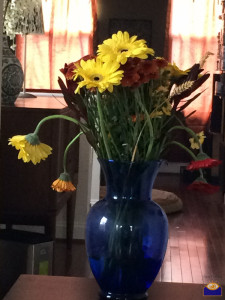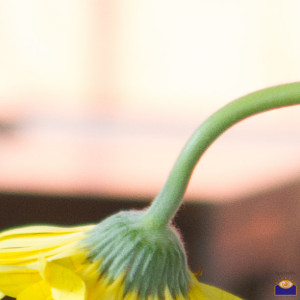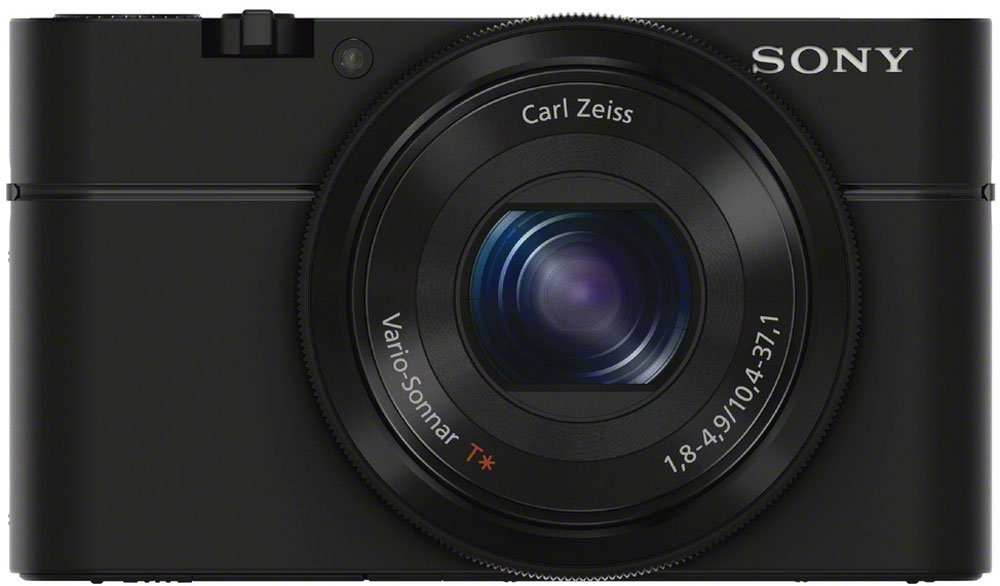It all started when I asked myself a simple question- do I have to carry my monster DSLR, or can I rely on my smartphone-camera to do the job? I reasoned, my smartphone can do panoramics, can upload the image to a site or my computer, can even edit the image to some extend. So I reasoned if I can compose well, can shoot in good light, I might be able to bring home winning shots with one of the smartphones like my daughter does? Can I get professional results out of these smartphones? The problem with that argument is that it totally ignores a few facts- the lens of the DSLR is 1,000x bigger and better than the smartphone, I cannot control the camera exposure much beyond the +/- exposure control buttons and who knows what would happen if I wanted to blow up the image beyond say, an 8×10. Therefore, I started to look at the smaller point-n-shoots and the mirrorless cameras. Can they do the job? The answers are quite unsurprising, but I thought I’d publish my rationale anyway.
[auth]
To do a semi-objective assessment, I set up a flower vase about 5′ from a tripod, left about 20′ of space behind it to check for bokeh (more on that later). I then gathered all the cameras we had- an iPhone 5S, a Samsung Galaxy S5, a Sony RX100 II, a Sony A6000 with a Carl-Zeiss 16-70mm f4 lens and a Canon 7D coupled with a Canon 24-70mm L f/2.8 lens. Before I start, a note to the (nerdy) readers that are concerned about megapixels, sensor type, sensor size, RAW to JPEG conversion, etc. please see my footnote about these parameters2. For now, it is suffice to say that I was more concerned about portability and final use of the print than what sensors there are in the market or how many megapixels my cameras had. Also note, I could not normalize the f-stop or aperture because when a device is set to “automatic” (e.g. smartphones), the ability to control aperture is lost. However, I did try to mimic the apertures in all instances as best as I could. Since the cameras were on a tripod (or jammed against one) their shutter speeds did not matter (they were high enough to be hand-held). One last note- I did not analyze HDR in many of these cameras since the DSLR does not have a native HDR ability.
I decided to do a 5-star rating1 using the parameters that I thought were important to me and some of my friends:
|
 |
To interpret the following tables, view the overall image to see if you like it subjectively compared to others. Next, look at the thumbnail images in the table. In the first first one, look for detail in the petals; the more detail, the better. In the second one, look for soft focus that does not show detail.; the less detail, the better. For other parameters, simply read my interpretation/notes.
iPhone 5S
This is one ubiquitous camera! Every other person seems to be carrying it. So how good is it really? Here is the image resized ‘for web’. I personally find the image a bit darker than others and the details are a bit muddy.
My observations-
| Overall: | A great emergency camera but generally cannot be used for enlargements/professional use. Having said that, I have to admit that I have a huge 3’x2′ enlargement of the Eiffel Tower taken by my wife using an iPhone 4 hanging in our living room. The image looks more like pop-art than one with details and that is what makes it beautiful. | |
|---|---|---|
| Portability |
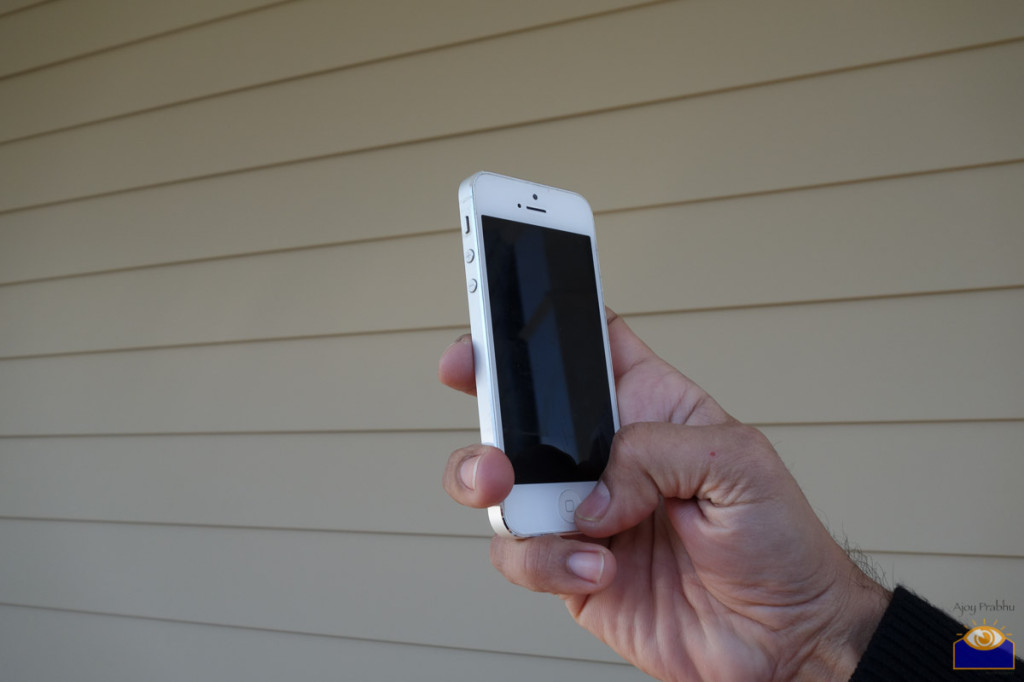  |
No need for a bag, extra batteries, lenses, etc. |
| Cost |
Approx. $700 | Even as a dedicated camera, the cost is not bad, but then iPhones are phones first and cameras later. |
| Image noise |
  |
Not good at all. A lot of detail in the petals is lost. This translates into bad enlargements and overall “muddy” images (as compared to others of course). |
| Image bokeh
|
  |
The credenza edge is clearly defined and therefore, not a good bokeh at all. In fact, you can see quite a lot of detail in the credenza. |
Samsung S5
This is probably the second most popular smartphone in US. The camera software interface has a lot of bells and whistles. For the following image, I used default settings. I personally find the image brighter than the iPhone, but everything seems to be in focus, even distant objects.
My observations-
| Overall: | Another great emergency camera but like the iPhone, cannot be generally used for enlargements/professional use. | |
|---|---|---|
| Portability |
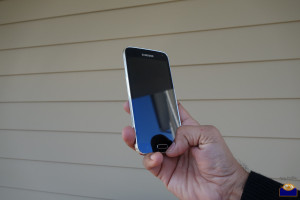  |
Just like the iPhone, no need for a bag, extra batteries, lenses, etc. Whip it out of your pocket and within a second or two, you are ready to take a shot. |
| Cost |
Approx. $600 | One of the cheapest of the lot tested here but just like the iPhones, these are multifunctional devices and being a camera is secondary to its main function. |
| Image noise |
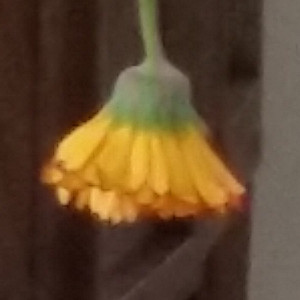  |
Quite noisy. There is some detail in the petals, but compared to others, it is pretty bad. Again, this translates into bad enlargements and overall soft images. |
| Image bokeh |
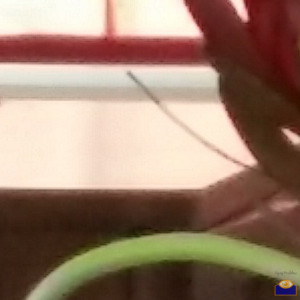  |
Just like the iPhone, the credenza edge is clearly seen and therefore, not a good bokeh at all. |
| General/web use |
Considering the portability of this phone, it’s ability to edit and upload on the go, it is a pretty good performer. The image quality on a typical browser looks good. | |
| Print/professional use |
Unless you “remake” the image that does not show noise (“illustration” effect), or enhances the noise as an “art” element, the image cannot be used professionally. | |
Sony RX100 II
The cheapest camera in the line up. This is a true point and shoot camera. However the camera has a lot of bells and whistles for advanced user. Again, I simply used the standard settings to take the image below. I personally find the image quite pleasing to the eye. Distant objects are quite a bit in focus but this is probably because the widest that the lens can open is f/5.6 (Note: smaller the number, less the depth of field or better the bokeh). As for noise, read on to see what that looks like.
| Overall: | The RX100 comes with a wonderful Carl-Zeiss lens which in itself is responsible for very sharp pictures. Coupled with the fantastic sensor and almost artificial intelligence-like software that can not only detect faces, but even knows when it the shot is of an infant, or if the shot is being backlight. The only down side of this camera is the lens. Despite being a premium lens it is still quite (as photographers call it) “slow”. The widest aperture on this lens seems to be 5.6 which makes a nice bokeh difficult. | |
|---|---|---|
| Portability |
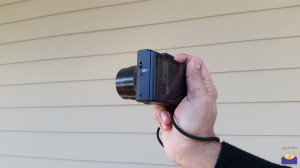  |
This being a true point and shoot, it can be carried in a shirt pocket and yet be ready within seconds of needing to take a shot. |
| Cost |
Approx. $500 | Cheapest of the lot tested here but since the device does only one thing well, produced better images than the smartphones. |
| Image noise |
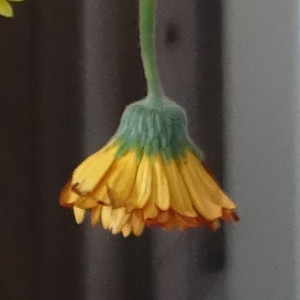  |
Detail in the petals is being retained at an ISO of 3200! Grain is noticeable, but not too much. |
| Image bokeh |
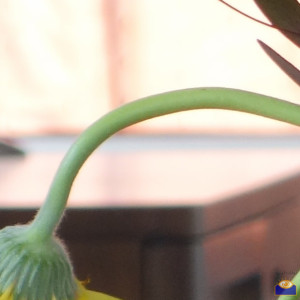  |
Just like the iPhone, the credenza edge is clearly seen and therefore, not a good bokeh at all. |
| General/web use |
Considering the portability of this camera, it’s ability to upload on the go, it is a pretty good performer. The image quality on a typical browser looks good. | |
| Print/professional use |
Images can be used professionally if you compose images in such a way that you make bokeh moot, as in a landscape where everything should be in sharp focus or shoot very close to the subject to enhance bokeh. | |
Sony A6000 with a CZ 16-70mm f/4 lens
Now we are starting to get into less portability but better processor and optics. This combination was not the cheapest but in comparison to the DSLR, it is quite a bit inexpensive.
I used aperture priority, set the f stop to 4.0 and took the image below. The image is quite pleasing to the eye. Distant objects are out of focus and therefore, the image stands out.


My observations-
| Overall: | Adding a premium quality lens on this camera body does negate the overall disadvantage of having a smaller sensor. Another big advantage of this camera is that using any of the multitude of cheap adapters, one can put very high quality lenses on the body. Even real old ones. The manual focus lenses cannot of course automatically focus, but the camera’s ability to help the user by way of “focus peeking” is a huge advantage. | |
|---|---|---|
| Portability |
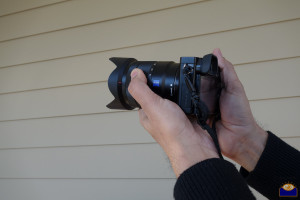  |
This camera needs two hands to operate only because it does not come with a power-zoom rocker switch. This is because all lenses that fit the camera are either zoomed manually or have dedicated buttons on the lens collar. But the overall size and weight are negligible in comparison to DSLRs. The grip is small for my hands, but I really did not need to rest the camera in both hands. I could just as easily touched only the zoom/focus rings, or just the controls on the right. |
| Cost |
Approx. $500 for the camera body and another $1,000 for the lens. | Certainly not a cheap combination. I could have bought the kit lens with the camera body and that would have run about $650 for the entire package. However, the lens that comes standard is a slow lens and has a variable aperture of f/3.5-5.6. This not only means slower shutter speeds but also less bokeh. |
| Image noise |
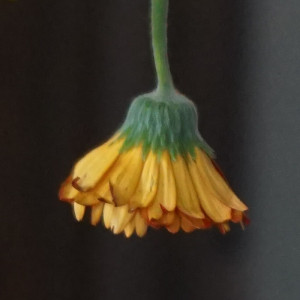  |
Detail in the petals is being retained at an ISO of 1600 and the grain is not noticeable. This image seems quite useable (more on that later). |
| Image bokeh |
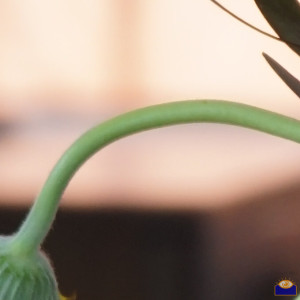  |
Here we have quite a pleasing bokeh of the edge of the credenza. Background details of the credenza area also gone Compare this to either of the smartphone images and you will see what I mean. |
| General/web use |
Considering the portability of this camera, it’s ability to upload on the go, it is a pretty good performer. The image quality on a typical browser looks outstanding thanks to a real sharp edges and color rendition. | |
| Print/professional use |
Images can certainly be used professionally. Bokeh is less dependent on the camera and more on the lens used. The faster (wider apertures) the lens, the better the bokeh. | |
Canon 7D with a 24-70mm f/2.8 L lens
Not a small camera by any stretch. This combination was the most expensive in the line-up, but remember that this has been my workhorse for a few years now and I have invested a lot in accessories and lenses for it.
Again, I used aperture priority, set the f stop to f/4.0 and took the image below. The image is quite pleasing to the eye. Distant objects are nicely out of focus yet one can see a lot of detail in the subject.


My observations-
| Overall: | Again, adding a premium quality lens on this camera body does negate the overall disadvantage of having a smaller sensor. However, the bulk and price of accessories makes me question the overall value of this system. | |
|---|---|---|
| Portability |
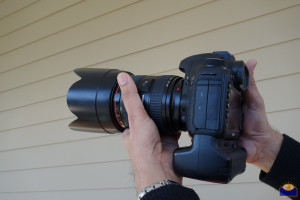  |
This camera cannot do without two hands! The bulk has its obvious disadvantages, but there are a few advantages too. For example it fits snuggly in my large hands and even in the dark, I can get to the buttons easily. |
| Cost |
Approx. $1,600 for the camera body and another $2,400 for the lens. | This is my standard combo I’ve used for 90% of my photos in the last few years. Due to the fact that the camera has a smaller sensor (than a 35mm full-frame), the sensor captures only the central image projected by the lens. This fact makes the image of very high quality and avoids distortions and chromatic aberrations. However, I have to ask myself whether carrying 20% of the lens and “wasting” the peripheral image is worth the weight or not. |
| Image noise |
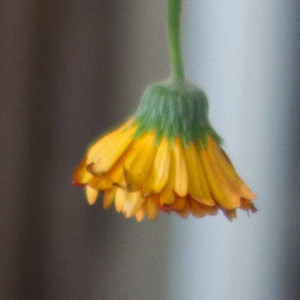  |
Detail in the petals is being retained at an ISO of 640 (the ISO that the camera chose). However, this is not a great ISO expansion because this still does not make the image hand holdable. Hence, the need for a tripod. And, since the camera and lens weigh a lot, we need at least a sturdy carbon fiber tripod that does not buckle. Needless to say, this adds further weight to the already heavy camera gear I am carrying! |
| Image bokeh |
|
The edge of the credenza is almost gone let alone the details in the credenza. Best bokeh of the lot for sure. |
| General/web use |
Of course, the image quality on a typical browser looks outstanding thanks to the “L” lens, however, I can’t even think about uploading the image directly from my DSLR. I have tried to do that using an Eye-Fi card, with limited success. I still have to go to a PC, pick up the file where invariably I fond that I want to edit it… and minutes go by before the image is online. | |
| Print/professional use |
Just like the Sony A6000, images can certainly be used professionally. Bokeh is less dependent on the camera and more on the lens used. The faster (wider apertures) the lens, the better the bokeh. | |
Conclusion:
This analysis was by no means completely objective nor was it supposed to serve the needs of all. I wanted to publish it here so that in case there are others that are constantly asking themselves the same question that I have been asking, might find some closure to their queries. As the sensors keep getting better (better S/N ratio) and cameras get more user friendly and “social” (there is a Facebook app on the S6000!), I am willing to bet that professionals will abandon the big bulky cameras and carry a smaller system that still meets or even exceeds their needs.
A side note about point-n-shoots. If you truly want good quality images and yet be able to “share” them instantly, look at cameras like the Sony RX100. I highly recommend it. Here is what my daughter did within seconds of holding it, Notice how close she got to the subject. To do this with a DSLR, you need a macro lens which in this case, is built into the camera.
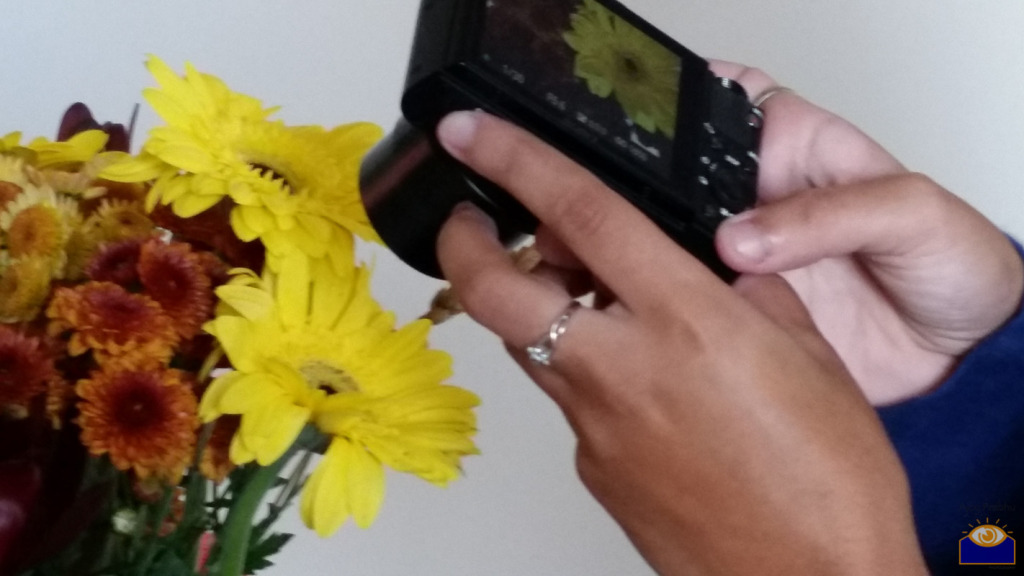

…and the results speak for themselves.
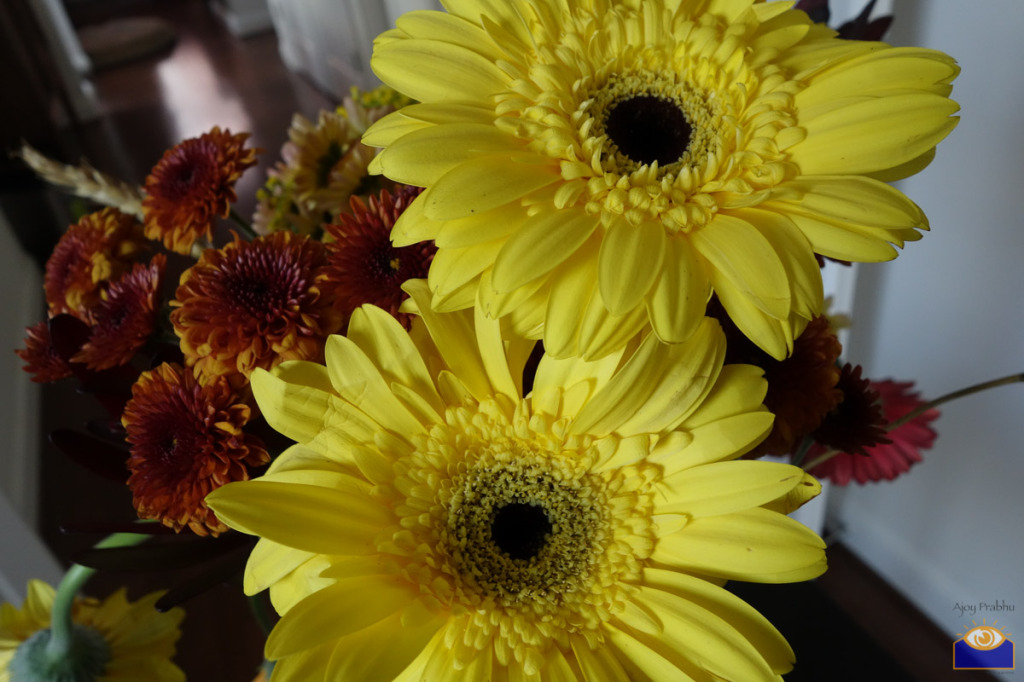

Don’t try this with a smartphone or even a DLSR unless you have a macro lens…and “No” I am not getting paid by Sony for all these analyses. 🙂
____
1 I compared the cameras to the other rather than those available in the market. e.g. while some might consider the RX100 to be expensive, for a point-n-shoot, in this group, it was rated as the “cheapest”.
2 While I understand that megapixels, sensor type, s/n ratio, f-stops can make a difference, I did not care because all I was trying to do was compare between all the cameras I had. What was the point of ignoring an iPhone just because it has a CCD sensor? What if it gave very good results at the end? Similarly, for f-stops, an iPhone f/2.2 had horrible bokeh because of its sensor size. Compare that to an f/4.0 from the Sony A6000. The results from the latter are far superior. As for megapixels, Currently, I have sold more images from my 6MP Canon 10D than my 18MP Canon 7D. Despite all this, I tried to keep as many parameters constant as possible so that all I was evaluating was the ability of the camera to bring home a winner.
[/auth] [simple_tooltip content=’I do not want this article to be picked up by search engines, yet want to let viewers like you, read it. Log in using Facebook; takes less than 2 clicks.’][Why login?][/simple_tooltip]

